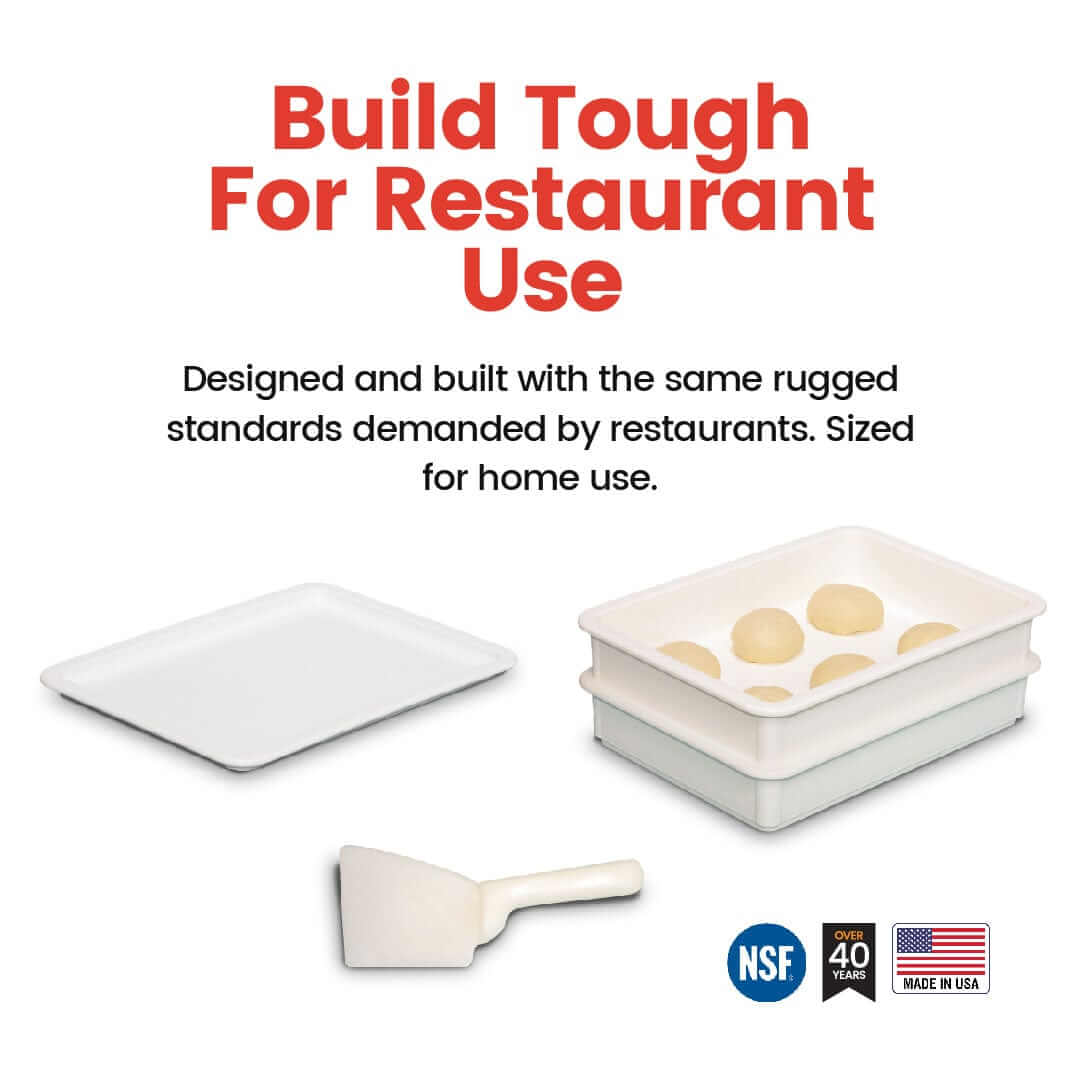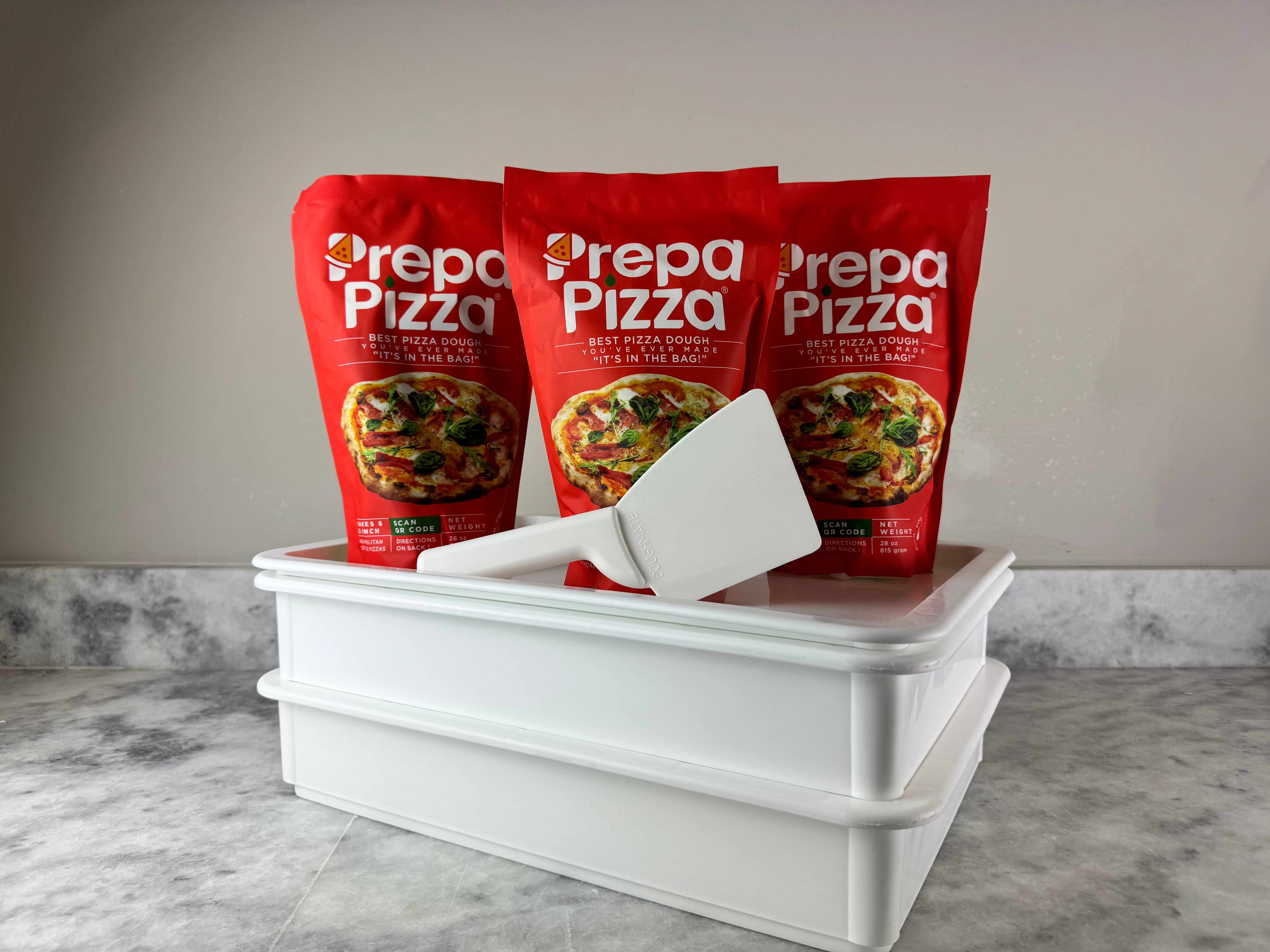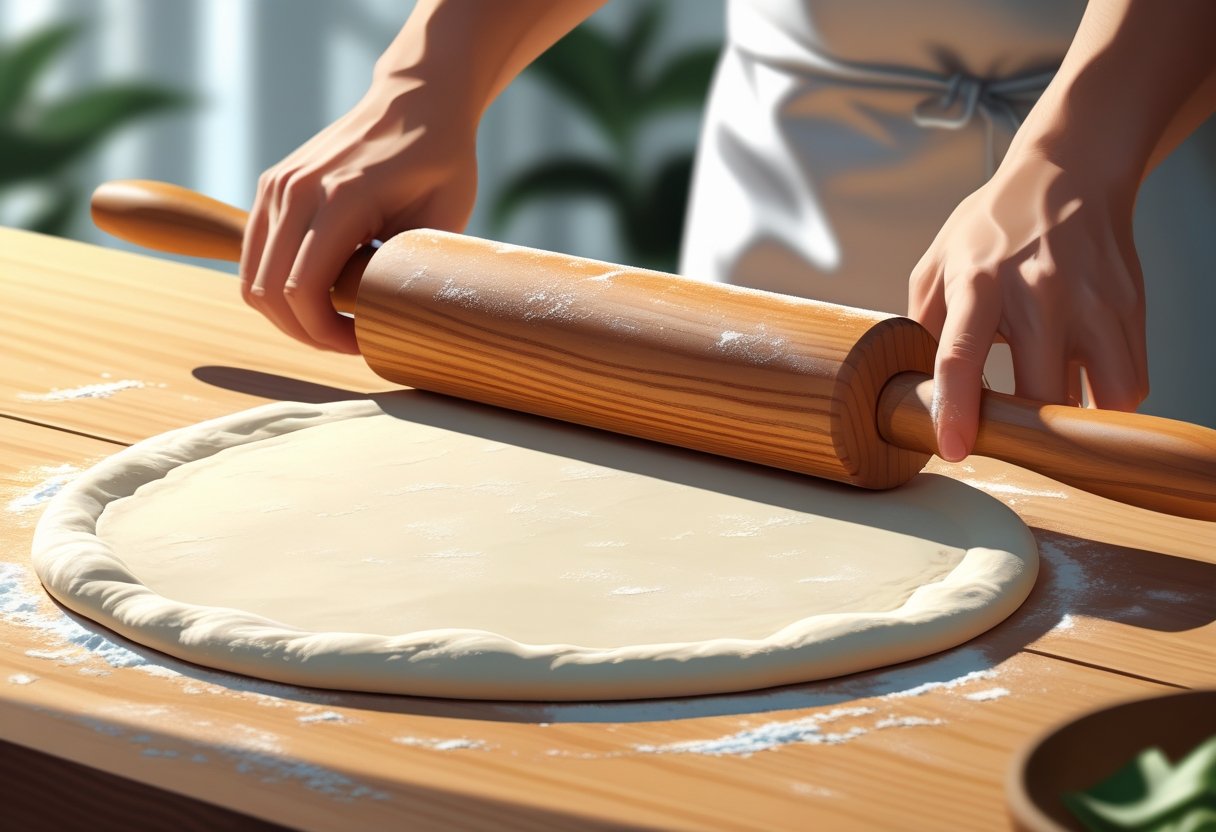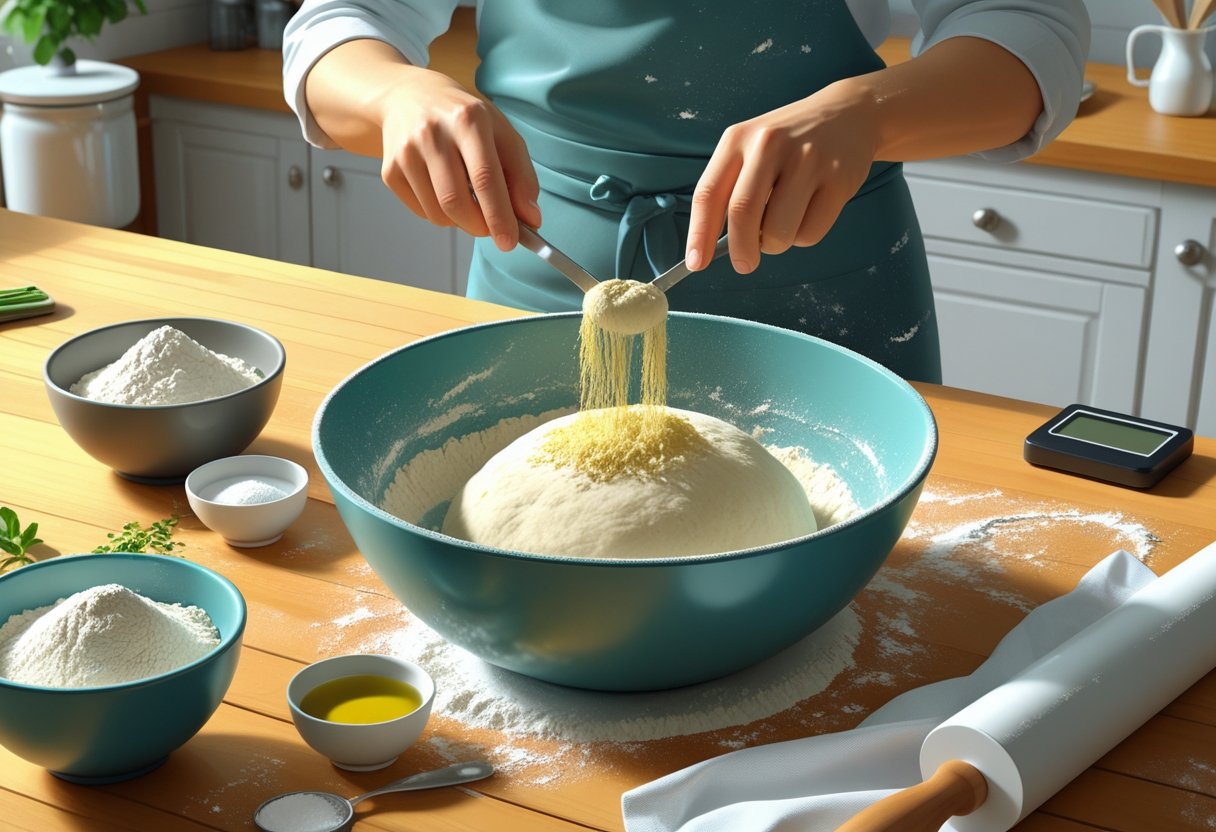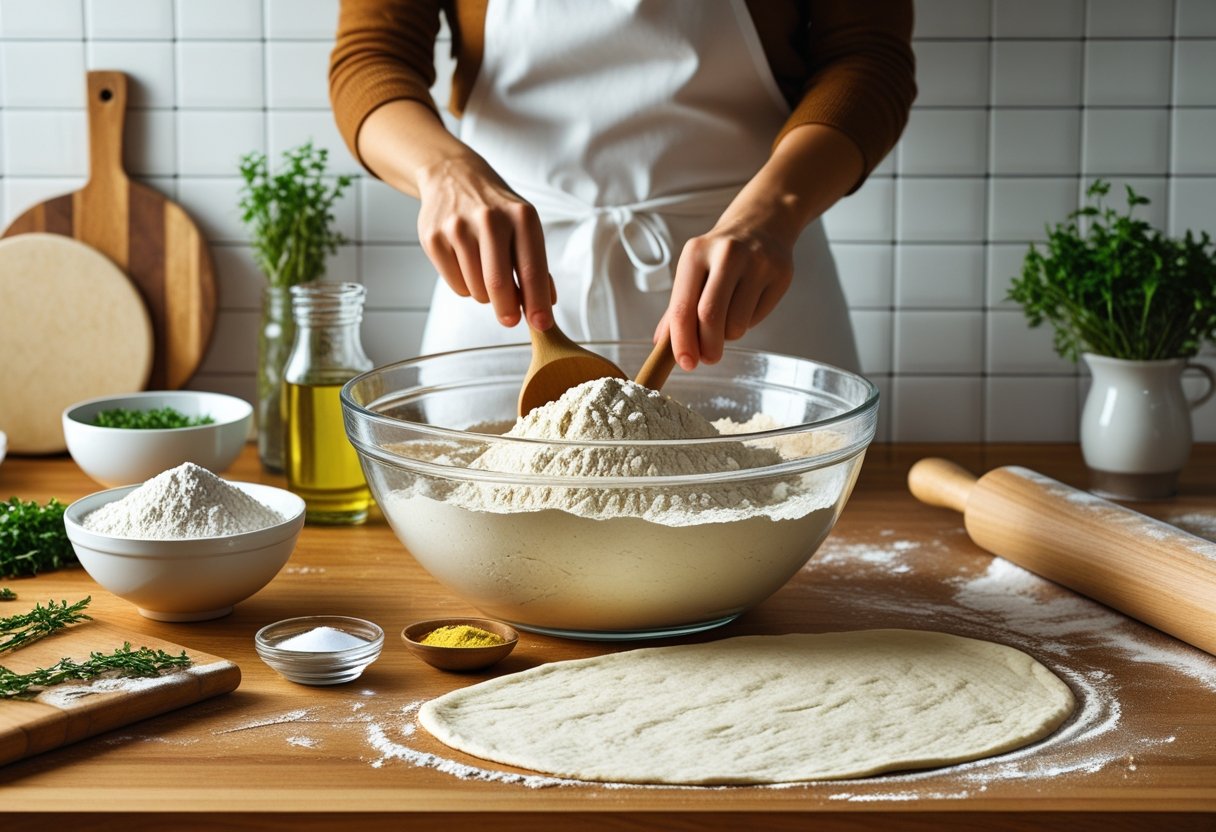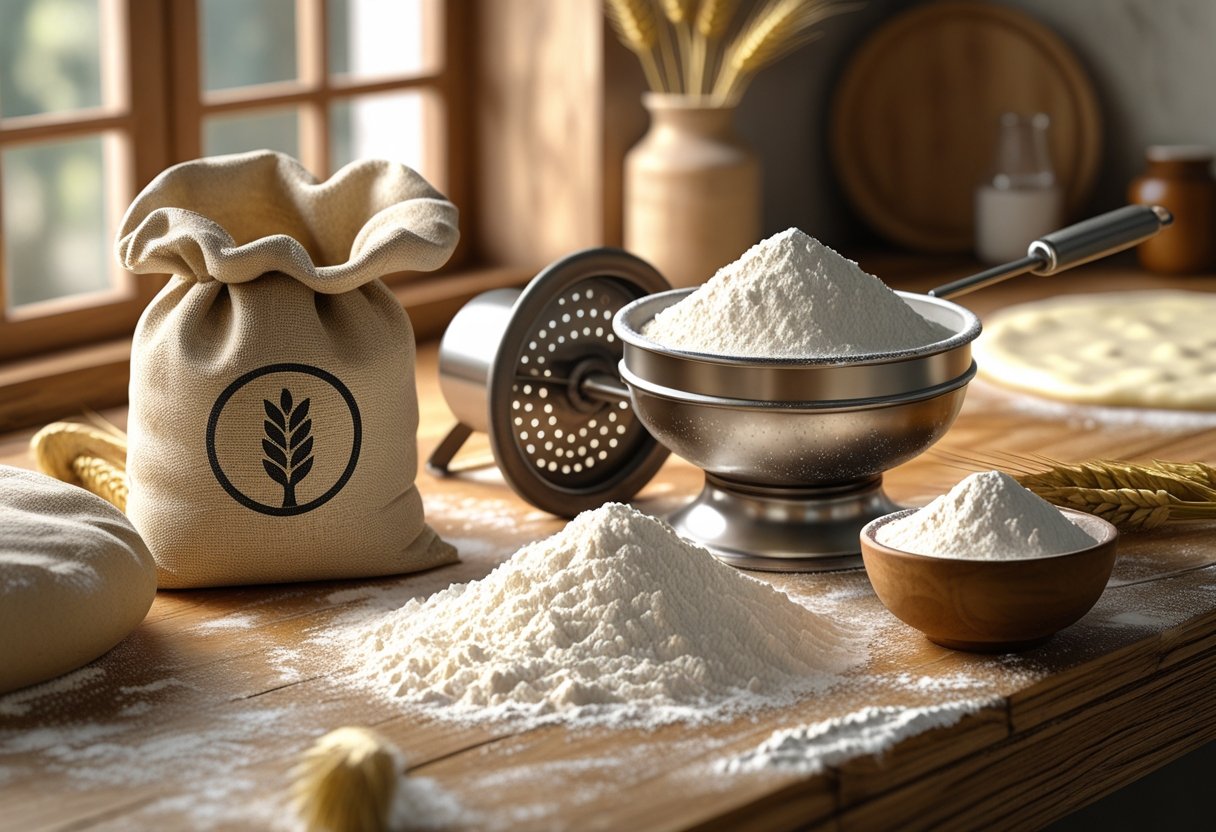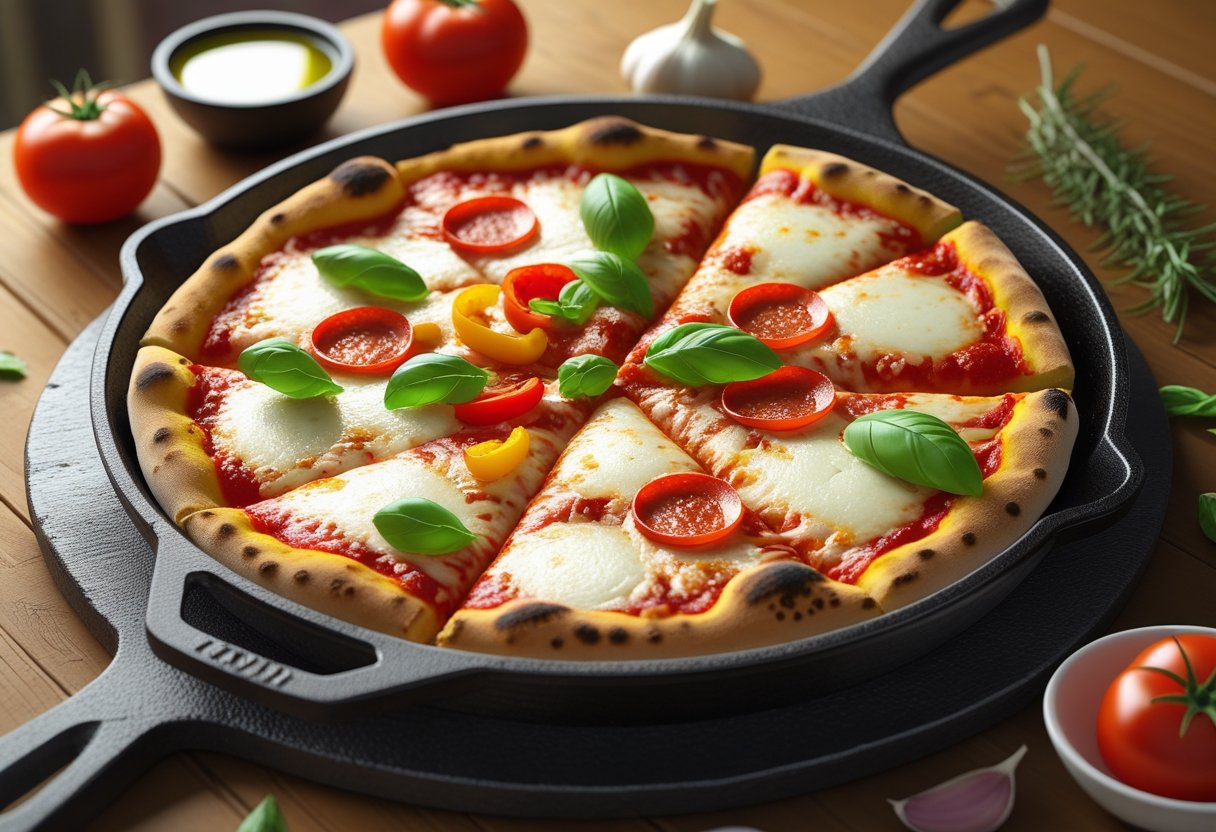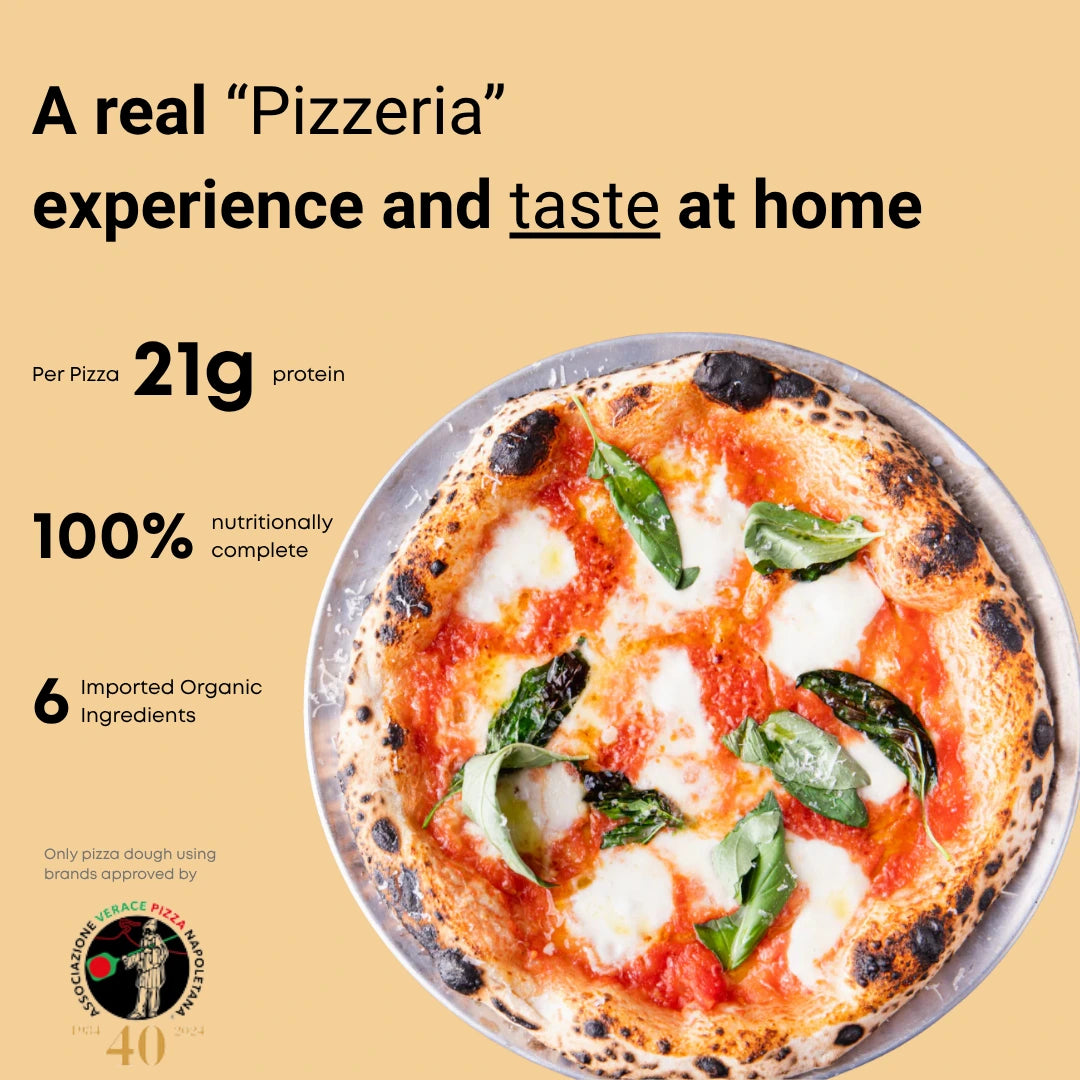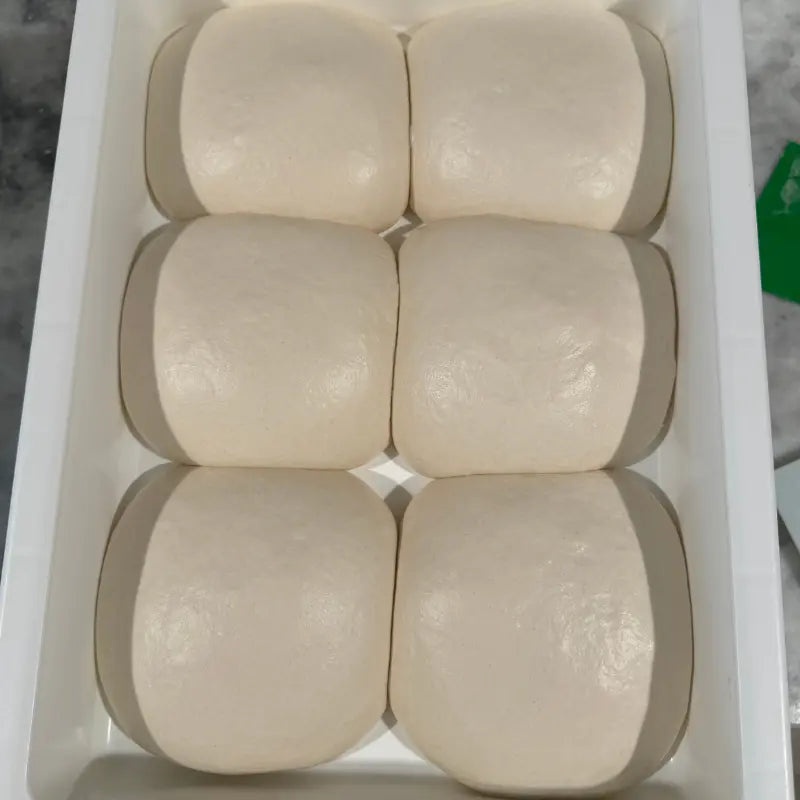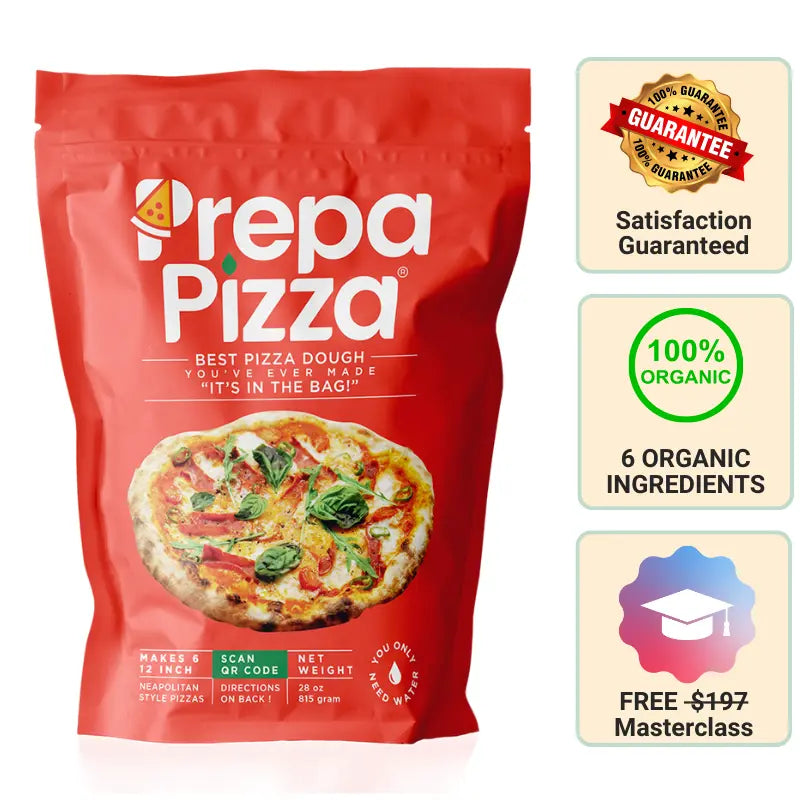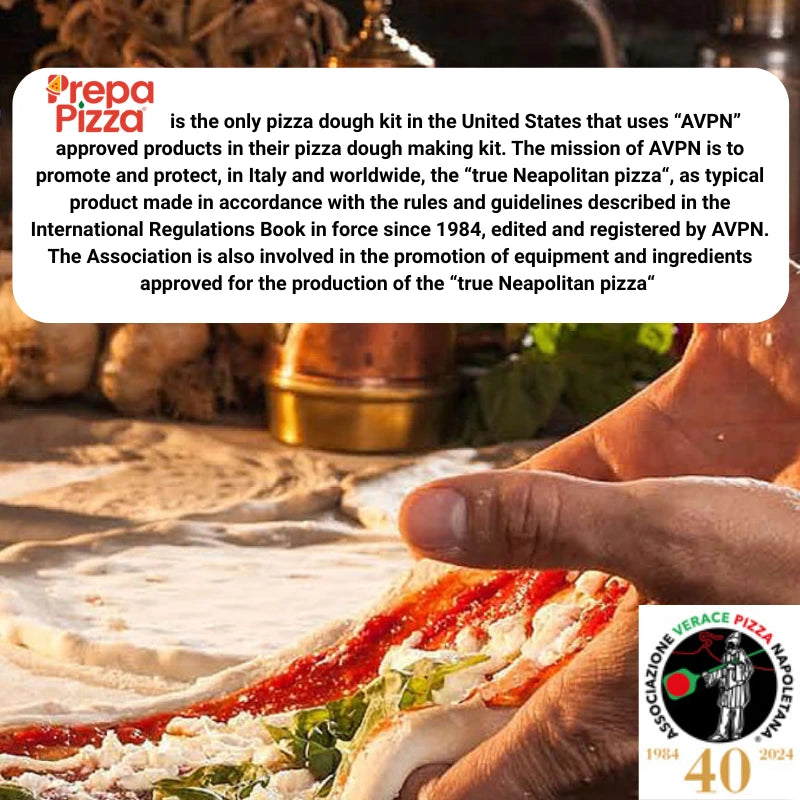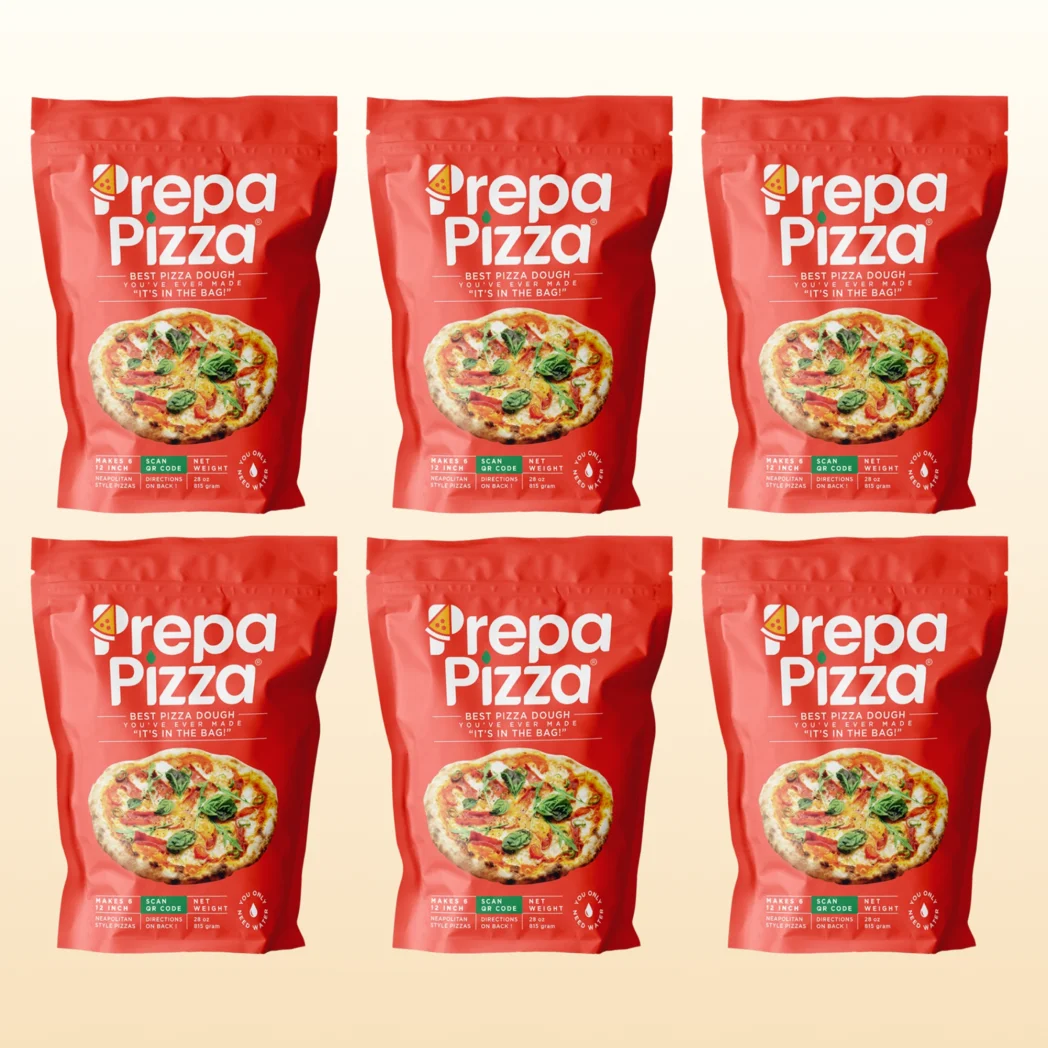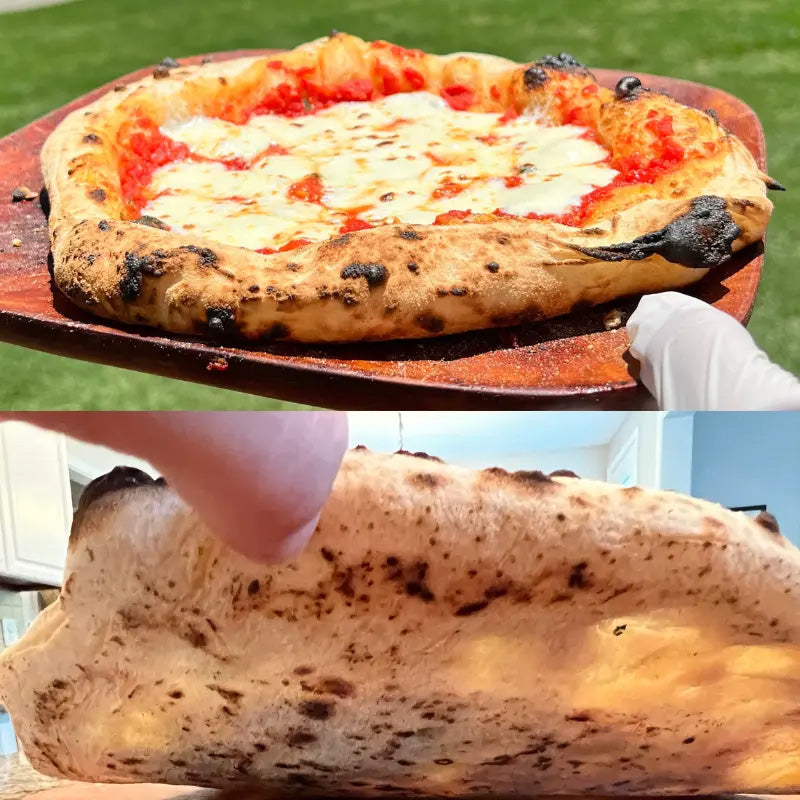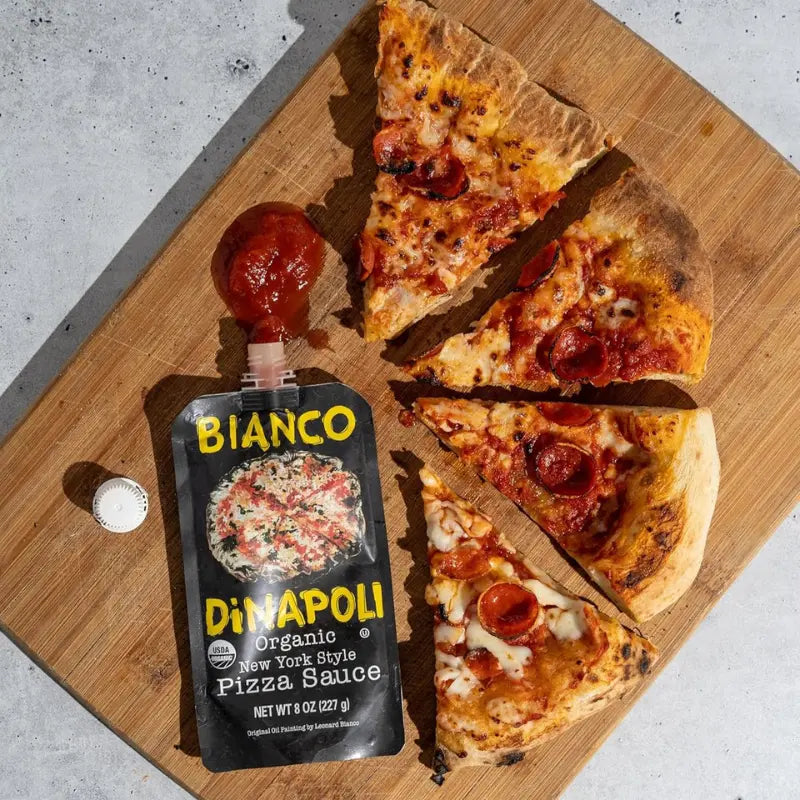
How To Defrost Pizza Dough Fast: Quick Methods for Perfect Results
When you want fresh, homemade pizza fast, defrosting your dough quickly is key. With Prepa Pizza’s premium quality premade dough, you don’t have to wait hours to enjoy a delicious meal. Their dough is made with quality ingredients to match restaurant standards, and you can find it easily at their Prepa Pizza dough kit page.
The fastest ways to defrost pizza dough involve using the refrigerator to thaw overnight or employing quick methods like a warm water bath or short microwave session without compromising dough quality. These methods help you get your dough ready while preserving its texture and flavor, so your pizza tastes just as good as if you made the dough from scratch. Using Prepa Pizza’s ready-to-use dough makes the process seamless and convenient for any pizza night.
Why Proper Defrosting Matters
Defrosting pizza dough correctly impacts the final texture and flavor of your pizza crust. Using high-quality dough like Prepa Pizza’s premade dough, which incorporates restaurant-grade ingredients, means defrosting it properly preserves its quality. You can find their premium dough at Prepa Pizza’s official product page.
Thawing pizza dough unevenly or too quickly can alter its elasticity and rise. Proper thawing ensures you maintain the dough’s stretchability and structure before baking, leading to a better cooking experience and taste.
Effects on Pizza Dough Texture
When you defrost pizza dough, its texture changes as ice crystals melt. Slow, controlled thawing preserves gluten structure, which keeps the dough elastic and easy to stretch.
If dough thaws too fast or at high temperatures, it can become sticky or soggy. This happens because the yeast reactivates unevenly, and moisture isn't distributed properly.
Using Prepa Pizza’s premium dough, you want to thaw it in a way that keeps it soft yet firm enough to handle. Proper thawing prevents tearing or stickiness, allowing you to shape the dough effectively for your perfect pizza.
Risks of Improper Thawing
Improper thawing can lead to bacterial growth if the dough remains in the danger zone of 40°F to 140°F for too long. This risks food safety and could spoil your pizza dough.
Sudden temperature changes, like microwaving or hot water thawing, can partially cook the dough or kill the yeast. This affects the dough’s ability to rise properly during baking.
With Prepa Pizza dough, following recommended thawing methods reduces contamination risks and keeps the yeast alive to create a desirable crust rise.
Impact on Pizza Crust Quality
Your pizza crust’s chewiness and crispness depend on how well you thaw pizza dough. Slow thawing allows yeast to ferment gently, improving flavor complexity and crust texture.
Improperly defrosted dough often yields a crust that is dense, tough, or unevenly cooked. It may also have less rise and poor oven spring, diminishing the overall eating experience.
To get the best from Prepa Pizza dough, thaw it patiently so the crust bakes up with a balanced crisp on the outside and a soft, airy interior. This control makes a noticeable difference in every bite.
Fastest Ways to Defrost Pizza Dough
When you need to defrost frozen pizza dough quickly, it's important to use methods that preserve its texture and allow the dough to rise properly. Using the right technique prevents unwanted cooking or soggy spots. Prepa Pizza offers premium quality premade dough that responds well to fast thawing methods, maintaining its restaurant-quality texture and flavor. Their dough kit can be conveniently defrosted using quick, safe methods so your homemade pizza turns out great every time.
Whether you want to thaw your dough for immediate use or prep it a bit in advance, these three methods will help you defrost pizza dough fast without sacrificing quality. You can follow these straightforward steps to get your dough ready for stretching and baking.
Microwave Method
Using the microwave is the quickest way to defrost pizza dough. Place your frozen Prepa Pizza dough on a microwave-safe plate and cover it lightly with a damp paper towel to retain moisture. Use the microwave’s defrost setting at 30-second intervals.
Check the dough between intervals to prevent cooking. Rotate or flip the dough as needed to ensure even thawing. This method typically takes 1 to 3 minutes depending on your microwave’s power and the dough size.
Be careful not to overheat or cook the dough, which can ruin its texture and inhibit a proper rise. After microwaving, let the dough rest at room temperature for 10-15 minutes to allow relaxation before shaping.
Cold Water Bath
A cold water bath offers a faster thaw than fridge methods while protecting dough quality. First, keep the dough sealed tightly in its packaging or a zip-top bag to prevent water exposure.
Submerge the sealed dough in a bowl of cold water. Change the water every 30 minutes to maintain a cold temperature. Most doughs thaw completely in about 1 to 2 hours using this method.
This approach minimizes temperature spikes, helping your dough retain its elasticity and rise ability. After thawing, let the dough sit out for about 20 minutes to warm slightly and relax before you begin shaping.
Room Temperature Thawing
Room temperature thawing is simple and speeds up the rise process compared to refrigerator thawing. Remove your Prepa Pizza dough from the freezer and place it on a floured surface or a large bowl covered loosely with plastic wrap.
Let the dough sit for 2 to 3 hours at around 68-72°F (20-22°C). During this time, it will thaw and begin to ferment, developing flavor and elasticity.
Check the dough occasionally—it should double in size and become soft and pliable. Avoid warming the dough in direct sunlight or near heat sources, which can cause uneven thawing or premature rising.
For best results, use room temperature thawing when you have a few hours before you want to make your pizza.
For more details on thawing techniques and premium dough options, visit Prepa Pizza's premade dough kit.
Step-by-Step Guide to Defrosting Pizza Dough Quickly
Defrosting pizza dough properly ensures even thawing without sacrificing texture or flavor, especially if you use a premium product like Prepa Pizza’s premade dough. Handling frozen dough correctly helps you get restaurant-quality results at home quickly.
You’ll learn how to prepare frozen dough for thawing, keep it evenly defrosted, and avoid common problems like over-thawing.
Preparing Frozen Pizza Dough
Start by removing your frozen pizza dough from the freezer. If you use Prepa Pizza’s premade dough, keep it in its sealed packaging to prevent contamination during thawing.
Place the dough in a bowl or on a clean surface, ideally inside a sealed plastic bag to avoid drying out. For best results, use cold water thawing by submerging the sealed dough in a bowl of cold water. Change the water every 30 minutes to keep it cold and speed up an even thaw without cooking the dough.
If in a rush, you can use the microwave on a low setting with short bursts, but watch carefully to avoid cooking the dough edges.
Tips for Even Thawing
Even thawing avoids dense, soggy, or uneven dough. Keep your dough in an airtight bag or container while thawing to retain moisture.
If you thaw dough on the countertop, separate it from heat sources and check it frequently. A cold water bath with consistent temperature control is preferable for faster thawing.
After the dough softens, place it on a lightly floured surface and gently knead it to redistribute moisture and improve elasticity. Kneading also helps reactivate yeast without overproofing.
How to Avoid Over-Thawing
Avoid thawing dough at room temperature for more than two hours to reduce the risk of bacterial growth or overproofing. Excessive thawing can cause sticky, overly soft dough that’s hard to shape.
To prevent this, use the refrigerator thaw method for longer but controlled thawing when time allows. If you notice the dough has expanded too much or developed an alcohol smell, it may be over-thawed.
Always plan to bake dough soon after thawing to preserve its structure and flavor, especially if you’re working with high-quality pizza dough like Prepa Pizza’s premade options.
For premium premade dough options, you can explore Prepa Pizza’s pizza dough kits that make the process simple and reliable.
Comparing Defrosting Methods for Home Cooks
When defrosting frozen pizza dough, different techniques affect the dough’s texture, rise time, and ease of use. Some methods are better suited for busy cooks, while others maintain the best quality for homemade pizza. Choosing the right option depends on your schedule, dough type, and desired results.
Prepa Pizza’s premade dough offers restaurant-quality ingredients and consistency that respond well to various thawing methods. You can explore their premium premade dough kit to get started with dough designed for easy handling and optimal flavor.
Best Way to Defrost Pizza Dough
The preferred method for thawing Prepa Pizza’s frozen pizza dough is to thaw it slowly in the refrigerator overnight. This cold thawing allows the dough to rise gently without risking overproofing or activating the yeast too quickly.
If you need dough quickly, thaw it at room temperature for 1-2 hours, ensuring it’s covered to prevent drying out. This balances speed and preservation of dough structure. Using warm water or microwave methods can speed up thawing but may negatively impact texture or accidentally begin to cook the dough.
For a reliable balance of speed and dough quality, refrigerated thawing is the best way to defrost pizza dough.
Pros and Cons of Each Technique
| Method | Advantages | Disadvantages |
|---|---|---|
| Refrigerator Thawing | Maintains texture, slow yeast activation, hands-off | Slow, requires planning |
| Room Temperature | Faster than fridge, decent yeast activation | Risk of overproofing or surface drying |
| Warm Water Bath | Quick, softens dough | Risk of uneven thawing, partially cooking dough |
| Microwave | Fastest | Can start cooking dough, changes texture |
| Oven Defrosting | Thaws and proofs simultaneously | Needs careful monitoring, risk of cooking |
Each approach suits different timelines. Prepa Pizza’s dough reacts best to slower thawing but can handle quicker methods if necessary.
Adjusting Methods for Different Dough Types
Prepa Pizza uses dough formulated for consistent results, but variances in hydration, flour type, and starter yeast still affect thawing. High hydration or whole-grain doughs often require gentler thawing to avoid sticky or overly slack dough.
If you work with dough containing additional ingredients, such as herbs or cheese, it's best to avoid aggressive thaw methods like microwaving. This prevents uneven heating or flavor changes.
For standard Prepa Pizza dough, adapting thaw time based on dough firmness after partial thawing is key. Feel the dough; if it’s still cold at the center, allow more time at room temperature or the fridge before shaping.
Understanding these differences helps you better manage defrosting and produce restaurant-quality homemade pizza.
Freezing and Storing Pizza Dough for Future Use
Properly freezing and storing pizza dough preserves its texture and flavor for your next meal. Using quality dough like Prepa Pizza’s premade dough, made with premium ingredients, ensures you get excellent results every time. Their dough kit is convenient and designed to freeze well, saving you time without sacrificing quality.
By following specific steps to freeze, protect, and thaw your dough, you maintain its elasticity and yeast activity. This lets you enjoy restaurant-quality pizza crust even when prepping ahead.
How to Freeze Pizza Dough
Start with dough that has completed its first rise. Divide it into portion sizes that match your pizza needs before freezing. Lightly coat each dough ball with olive oil to prevent sticking.
Place the dough balls in airtight containers or tightly wrap them in plastic wrap, then put them in resealable freezer bags. Remove as much air as possible to avoid freezer burn.
Label each package with the date. Dough can be frozen for up to two months with good results. Freezing your dough within 24 hours of preparation helps maintain flavor and texture.
Using Prepa Pizza premade dough from their dough kit simplifies this process since it is crafted to freeze and thaw reliably.
Preventing Freezer Damage
To protect dough during freezing, eliminate air exposure to avoid ice crystal formation, which degrades dough quality. Use resealable bags designed for freezing and squeeze out excess air.
Avoid stacking dough packages tightly to prevent crushing and uneven freezing. Keep your freezer temperature stable at 0°F (-18°C) or below.
If ice crystals form on your dough, it likely means the packaging allowed moisture in. Remove damaged spots but consider using the dough sooner as texture may be affected. Freezer burn can cause dry, tough spots and impact dough rise.
Proper wrapping and consistent freezer conditions maintain the dough’s fresh and airy structure until you’re ready to thaw.
Storing Thawed Dough
Defrost frozen dough gradually in the refrigerator for 8 to 12 hours to keep it from over-proofing. This slow thaw helps preserve the dough’s structure and yeast activity.
Once thawed, allow the dough to rest at room temperature for 30 to 60 minutes before stretching or shaping. This step relaxes the gluten for easier handling.
Use thawed dough within 24 hours for best results to avoid deterioration in rise and flavor. If storing longer, keep it refrigerated tightly covered to prevent drying out or contamination.
Prepa Pizza dough is designed to respond well to thawing and resting, ensuring a consistent homemade pizza experience even when frozen.
Frequently Asked Questions
When working with premade dough from Prepa Pizza, known for its premium quality and restaurant-grade ingredients, knowing how to thaw your dough quickly and safely is essential. Using the right method guarantees the texture and stretchability you expect from a high-quality product like Prepa Pizza’s premade dough.
Defrosting your dough properly starts with understanding your options, from appliances you likely already own to simple countertop techniques. This knowledge helps you keep your dough pliable without compromising its quality or flavor.
What is the quickest method to defrost pizza dough in a microwave?
The microwave is the fastest defrosting tool but requires caution. Use the defrost setting and check the dough every 20-30 seconds to prevent cooking the edges. Rotate or flip the dough to promote even thawing.
Avoid high power, as microwaves can start cooking the dough prematurely, which affects its rise and texture.
Can I safely defrost pizza dough using an air fryer, and if so, how?
Defrosting pizza dough in an air fryer is less common but can be done carefully. Use the lowest temperature setting available, around 90-100°F (32-38°C), and check frequently.
Place the dough in a bowl covered with foil or a damp cloth to avoid drying out. This method requires close monitoring to prevent cooking the dough surface.
Is it possible to defrost pizza dough overnight, and what are the steps?
Yes, defrosting overnight in the refrigerator is the safest and most reliable method. Place the frozen dough in a sealed container or plastic bag to avoid drying out.
Allow 8 to 24 hours for the dough to thaw completely. After removing it from the fridge, let it come to room temperature for about 30 minutes before use to regain pliability.
What are the best practices for defrosting pizza dough on the counter?
You can defrost pizza dough at room temperature by placing it in a lightly oiled bowl covered with plastic wrap. This method usually takes 1 to 2 hours.
Keep an eye on the dough to ensure it doesn’t overproof or dry out. If it becomes sticky, lightly dust it with flour to maintain the right texture.
How can I use an oven to defrost pizza dough efficiently?
To use an oven, preheat it to the lowest temperature (usually around 100-150°F or 38-65°C). Turn it off and place your dough inside, covered with a damp towel.
Check every 10-15 minutes to avoid cooking. This creates a warm, stable environment that helps the dough thaw evenly without rapid temperature changes.
What advice is available on Reddit for defrosting pizza dough rapidly?
Reddit users often recommend combining methods, such as initially defrosting in cold water wrapped in a sealed bag, then letting it rest briefly at room temperature.
Many emphasize the importance of gentle handling to avoid tearing and using flour to manage stickiness, echoing professional guidelines for maintaining dough quality during quick defrosting.





